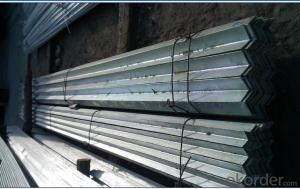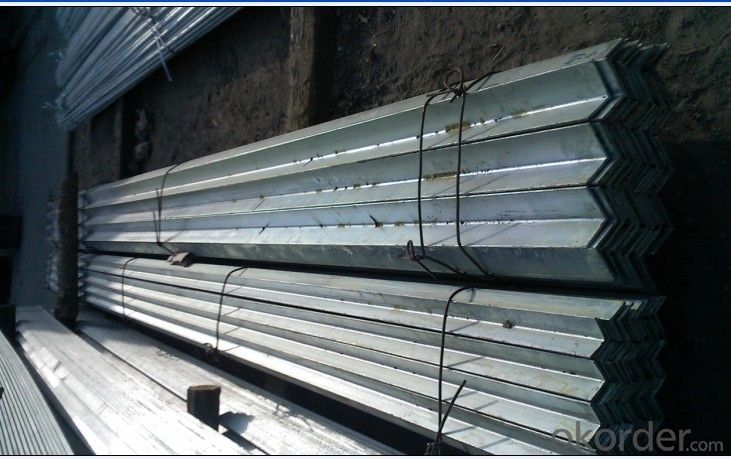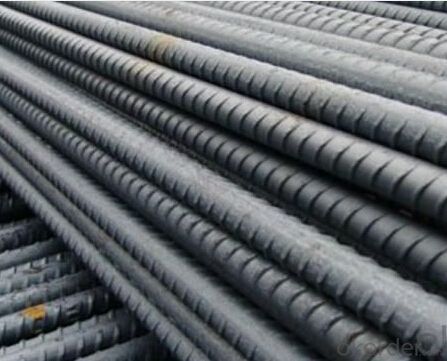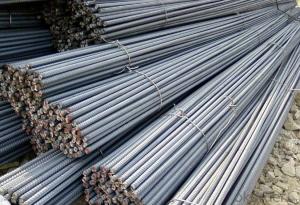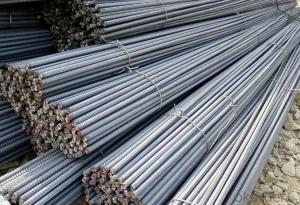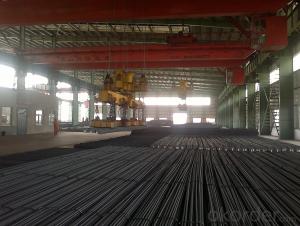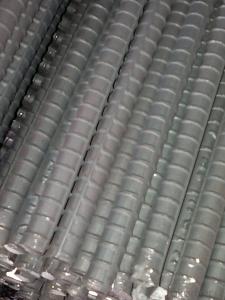BS STANDARD HIGH QUALITY HOT ROLLED REBAR
- Loading Port:
- Tianjin
- Payment Terms:
- TT OR LC
- Min Order Qty:
- 50 m.t.
- Supply Capability:
- 100000 m.t./month
OKorder Service Pledge
OKorder Financial Service
You Might Also Like
Product Description:
Appearance: Black
Technique: Slitting hot rolled steel coil
Grade: Q235, Q195,A36 SS400 S235jr.St37-2
Standard: AISI,GB,DIN,ASTM,EN,JIS
Length: 6m, 9m, 12m or as your requirement.
Width: 10mm-1010mm
Thickness: 1.5mm-20mm
Business type: big manufacture
Place of origin: Tianjin China (Mainland)
Packaging Details: In bundles for exporting and sea worthy
Delivery Detail: Within 15-35 days after receiving L/C or deposite T/T
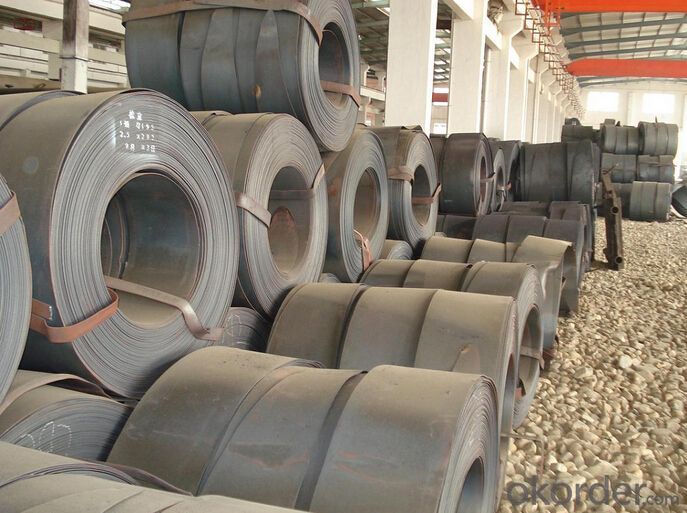
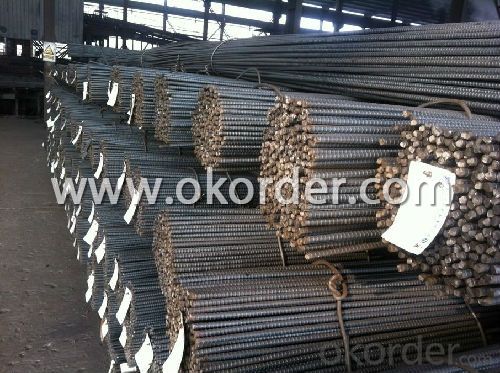
General specification as below:
Flat Bar Specification | |||
Width (mm) | Thickness (mm) | Length (m) | Theoretical Weight (kg/m) |
20 | 2.0 | 6/9/12 | 0.31 |
20 | 2.5 | 6/9/12 | 0.39 |
20 | 2.75 | 6/9/12 | 0.43 |
25 | 2.5 | 6/9/12 | 0.49 |
25 | 3.75 | 6/9/12 | 0.74 |
30 | 2.5 | 6/9/12 | 0.59 |
30 | 3.5 | 6/9/12 | 0.82 |
30 | 9.75 | 6/9/12 | 2.30 |
40 | 3.5 | 6/9/12 | 1.10 |
40 | 4.75 | 6/9/12 | 1.50 |
40 | 11.75 | 6/9/12 | 3.69 |
50 | 2.75 | 6/9/12 | 1.08 |
50 | 4.5 | 6/9/12 | 1.77 |
50 | 9.75 | 6/9/12 | 3.83 |
60 | 5.5 | 6/9/12 | 2.60 |
60 | 7.5 | 6/9/12 | 3.53 |
60 | 11.5 | 6/9/12 | 5.42 |
80 | 5.5 | 6/9/12 | 3.45 |
80 | 7.5 | 6/9/12 | 4.71 |
80 | 11.75 | 6/9/12 | 7.38 |
100 | 3.25 | 6/9/12 | 2.55 |
100 | 4.75 | 6/9/12 | 3.73 |
100 | 7.5 | 6/9/12 | 5.89 |
120 | 9.75 | 6/9/12 | 9.18 |
120 | 11.75 | 6/9/12 | 11.07 |
150 | 9.75 | 6/9/12 | 11.48 |
150 | 11.5 | 6/9/12 | 13.54 |
150 | 13.5 | 6/9/12 | 15.90 |
160 | 11.75 | 6/9/12 | 14.76 |
200 | 9.5 | 6/9/12 | 14.92 |
250 | 5.75 | 6/9/12 | 11.28 |
340 | 7.75 | 6/9/12 | 20.68 |
Products Advantages
1. high quality competitive price and Accurate in size
2. high dimensional accuracy
3. Guaranteed raw material
4.high utilization rate of material
5.convenient in construction, saving much time and labor
6. high mechanical strength
Application: Widely used for construction, Ship building, Machinery manufacturing ,steel structure,agriculture and steel grating.
- Q: What are the common lengths of steel rebars?
- The common lengths of steel rebars typically range from 20 feet to 60 feet, with 40 feet being the most commonly used length.
- Q: Can steel rebars be used in pre-stressed concrete construction?
- Yes, steel rebars can be used in pre-stressed concrete construction. In pre-stressed concrete, steel rebars are used as reinforcement to withstand tension forces. These rebars are strategically placed and pre-stressed with tension to counteract the potential stresses and improve the structural strength and durability of the concrete.
- Q: What are the different types of steel rebars used in earthquake-prone regions?
- In earthquake-prone regions, several types of steel rebars are commonly used, including carbon steel rebars, stainless steel rebars, and epoxy-coated rebars. Carbon steel rebars are the most widely used due to their high strength and cost-effectiveness. Stainless steel rebars provide excellent corrosion resistance and durability, making them suitable for aggressive environments. Epoxy-coated rebars offer protection against corrosion and are often used in locations with high moisture content. The choice of rebar type depends on the specific requirements and conditions of the earthquake-prone region.
- Q: Can steel rebars be used in structures with high resistance to moisture?
- Structures that require high resistance to moisture can incorporate steel rebars. Nonetheless, it is crucial to acknowledge that steel is prone to corrosion when exposed to moisture for extended periods. In order to mitigate this risk, preventive measures such as implementing adequate concrete coverage and waterproofing techniques are necessary. Furthermore, utilizing steel rebars with corrosion-resistant coatings or alloys, such as epoxy-coated or stainless steel rebars, can significantly augment moisture resistance. The longevity and durability of structures in high-moisture environments heavily rely on proper design, construction, and maintenance practices.
- Q: What is the role of steel rebars in reducing concrete shrinkage?
- The reinforcement and added strength provided by steel rebars are crucial in minimizing concrete shrinkage. When concrete cures, it goes through hydration, a process in which it loses water and shrinks. This shrinkage has the potential to cause cracking and structural instability. By incorporating steel rebars into the concrete, they serve as reinforcement and help counteract shrinkage. These rebars offer tensile strength, which means they can resist pulling or stretching forces. As the concrete shrinks, the rebars hold it together and prevent excessive cracking. Moreover, steel rebars aid in distributing the load more evenly throughout the concrete structure. This reduces stress concentration in specific areas and further reduces the likelihood of shrinkage-related cracking. Additionally, steel rebars can act as thermal conductors, promoting even heat dissipation within the concrete. This prevents temperature differences within the structure, which can lead to differential shrinkage and subsequent cracking. To summarize, steel rebars play a vital role in reducing concrete shrinkage by providing reinforcement, resisting tensile forces, distributing loads, and regulating temperature differences. Consequently, they enhance the overall durability and stability of the concrete structure, minimizing the adverse effects of shrinkage.
- Q: What is the impact of steel rebars on the constructability of a project?
- The constructability of a project is greatly affected by steel rebars, which play a vital role in reinforcing and providing structural integrity to concrete structures. By incorporating steel rebars, the overall strength, durability, and resilience of a construction project are significantly improved. One important impact of using steel rebars is the increased load-bearing capacity of the structure. Rebars are designed to withstand tension, complementing the concrete's ability to resist compression. This combination enhances the structural strength of the project, enabling it to withstand heavy loads and external forces, such as earthquakes or high winds. Moreover, steel rebars also enhance the ductility of the concrete structure. Ductility refers to the material's ability to deform without breaking. By adding rebars, the concrete becomes more flexible, allowing it to absorb energy and deform under stress before reaching its breaking point. This is particularly important in areas prone to seismic activities, as it helps prevent sudden and catastrophic failure of the structure. Another aspect of constructability affected by steel rebars is the overall lifespan of the project. The corrosion resistance properties of rebars, especially when coated or galvanized, significantly extend the lifespan of the structure. This is particularly relevant in environments with high humidity, coastal areas, or regions with harsh weather conditions. By preventing corrosion and maintaining the integrity of the rebars, the entire project's longevity and durability are greatly enhanced. Additionally, steel rebars also facilitate the construction process itself. Their availability in various lengths, shapes, and sizes allows for flexible and efficient design and construction. Contractors can easily cut, bend, and shape rebars to fit specific project requirements, reducing construction time and costs. Moreover, rebars can be prefabricated off-site, minimizing on-site labor and simplifying the construction process. In conclusion, the impact of steel rebars on the constructability of a project is highly significant. They improve the overall strength, load-bearing capacity, ductility, and lifespan of the structure. Additionally, the flexibility and ease of use of steel rebars contribute to efficient construction practices. Therefore, incorporating steel rebars into a project is essential for ensuring its structural integrity and long-term success.
- Q: How are steel rebars connected to each other in a reinforced concrete structure?
- Steel rebars are connected to each other in a reinforced concrete structure using methods such as overlapping, welding, or using mechanical connectors like couplers or threaded bars. The connection methods ensure that the rebars are securely linked together, providing stability and strength to the structure.
- Q: Are there any specific safety precautions to be taken while handling steel rebars?
- Yes, there are several safety precautions that should be taken while handling steel rebars. Here are some key points to consider: 1. Personal Protective Equipment (PPE): Always wear appropriate PPE, including safety goggles or glasses, gloves, and steel-toed boots. This will help protect against eye injuries, cuts, and crushed toes. 2. Lifting Techniques: When lifting rebars, use proper lifting techniques such as bending at the knees, keeping the back straight, and using leg muscles to lift the load. Avoid twisting or jerking motions while lifting to prevent strains or sprains. 3. Proper Storage: Store rebars in an organized and secure manner, ensuring they are not leaning against walls or other structures. This will prevent them from falling and causing injuries. 4. Sharp Edges: Be cautious of the sharp edges on rebars. Always handle them with care to avoid cuts or punctures. It is recommended to wear protective gloves to reduce the risk of hand injuries. 5. Secure Transportation: When transporting rebars, secure them properly to prevent movement or falling off the vehicle. Use appropriate restraints such as ropes or straps to secure the load safely. 6. Electrical Hazards: Be aware of any overhead power lines or live electrical sources near the working area. Maintain a safe distance from them to prevent accidental contact with the rebars, which can conduct electricity. 7. Communication and Awareness: Always communicate with other workers in the vicinity to ensure everyone is aware of the presence of rebars. This will help prevent accidental injuries caused by tripping or colliding with the rebars. By following these safety precautions, you can minimize the risk of accidents or injuries while handling steel rebars. It is also important to undergo proper training and adhere to any specific safety guidelines provided by your employer or industry regulations.
- Q: How do steel rebars contribute to the energy efficiency of a building?
- Steel rebars contribute to the energy efficiency of a building in several ways. Firstly, steel rebars are used to reinforce concrete structures, such as beams, columns, and walls. This reinforcement helps to increase the structural integrity of the building, allowing it to withstand various loads and forces. This, in turn, reduces the need for excessive materials in the construction process, leading to a more energy-efficient building. Additionally, steel rebars have excellent thermal conductivity properties. This means that they can efficiently transfer and distribute heat throughout the building, helping to regulate the internal temperature. By evenly distributing heat, steel rebars help to minimize temperature fluctuations, reducing the need for excessive heating or cooling systems, thus saving energy. Moreover, steel rebars have a long lifespan and require minimal maintenance. This durability ensures that the building remains structurally sound over time, reducing the need for frequent repairs or replacements. As a result, the energy consumed in maintenance and renovation activities is significantly reduced. Furthermore, the use of steel rebars allows for the construction of larger, open spaces with fewer supporting columns. This design flexibility facilitates the integration of natural light and ventilation, reducing the reliance on artificial lighting and air conditioning systems. By maximizing natural resources, steel rebars contribute to the energy efficiency of the building. In conclusion, steel rebars play a vital role in enhancing the energy efficiency of a building. Their ability to reinforce structures, efficient thermal conductivity, durability, and design flexibility all contribute to reducing the energy consumption associated with construction, maintenance, and operation of the building.
- Q: Can steel rebars be used in port infrastructure construction?
- Yes, steel rebars can be used in port infrastructure construction. Steel rebars are commonly used in the construction industry, including for port infrastructure projects. Rebars provide strength and reinforcement to concrete structures, making them ideal for constructing durable and resilient port facilities. They help in reinforcing concrete slabs, beams, and columns, ensuring that the structures can withstand the heavy loads and constant exposure to water and other environmental factors in port areas. Additionally, steel rebars have high tensile strength, making them suitable for handling the dynamic forces experienced in port infrastructure such as wharves, piers, and docks. Overall, steel rebars are an essential component in the construction of robust and long-lasting port facilities.
Send your message to us
BS STANDARD HIGH QUALITY HOT ROLLED REBAR
- Loading Port:
- Tianjin
- Payment Terms:
- TT OR LC
- Min Order Qty:
- 50 m.t.
- Supply Capability:
- 100000 m.t./month
OKorder Service Pledge
OKorder Financial Service
Similar products
Hot products
Hot Searches
Related keywords
